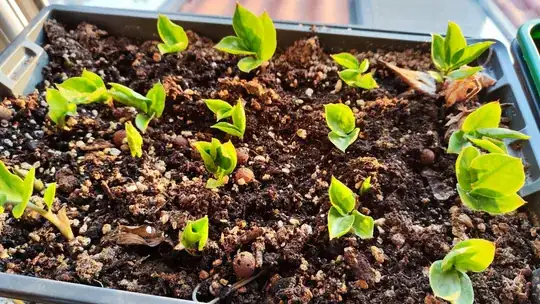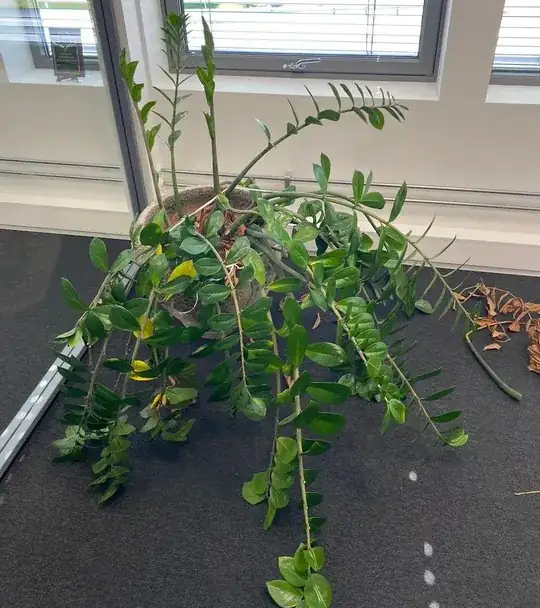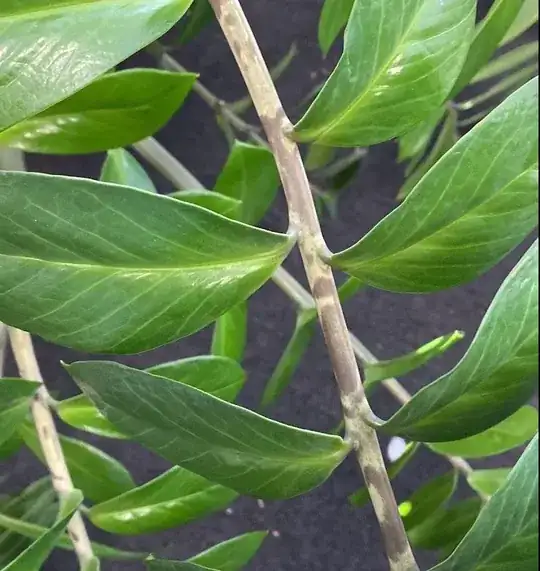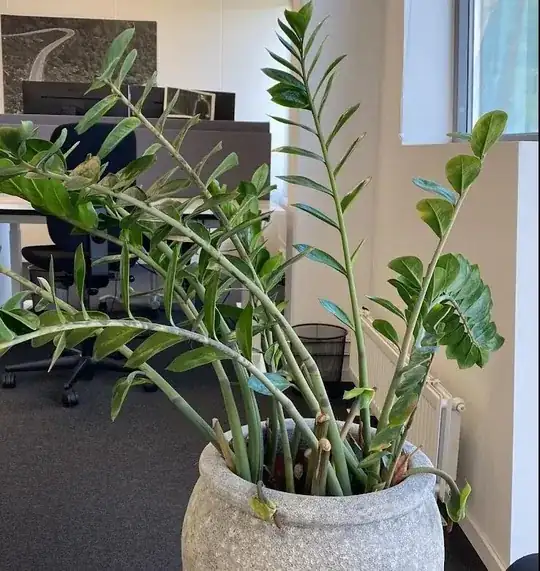I would not say either of those plants are 'thriving ' to be honest.
ZZ plants are one of the most difficult plants to kill and yet this appears to be the case here.
If I may explain where these plants come from and demonstrate what the best conditions you can possibly give them to reproduce their 'ideal' living conditions.
They originally come from East Africa in a broad band of what you might call the African Savannah - arid sandy scrub soils with very little nutrient in the soils and infrequent rain. They evolved to survive in these conditions by developing waxy leaves and stems, along with fleshy tubers, all capable of the rapid absorption and retention of water, so when it rains, it sucks up as much of it as it can and holds onto it.It therefore follows that these plants are opportunistic in both nutrient and water access and will prosper in well draining gritty/sandy cactus-type substrates. They also must not be continually watered, and very much like Snake Plants, watering them once a month is pretty much the right sort of regime, depending upon the micro-environment they are living in, in your case a busy office.
To support such a wondrous shoot structure that the ZZ plant displays, it requires the roots to be of complementary size and since there is evidence that this year new growth is visible, I must only deduce that the problem rests with the roots.
Bearing in mind that over-watering and underwatering can often be demonstrated by often similar shoot distress, the only thing I suggest is you get yourself a large tarpaulin and carefully remove the plant and substrate from each of the pots in turn and with a chopstick and/or a gloved hand carefully remove as much of the substrate as you possibly can so you can examine the condition of the root system.
A healthy root system for a plant of this size should dominate the entire pot. Roots should be white in colour, firm in texture and the tubers should be the same texture, colour and consistency of what we call in the UK, a new potato with roots coming out of it and possibly even shoots. A healthy root system should not smell of anything but a fresh forest floor.
I am going to predict that you will find a stinky smelling substrate and black mushy roots and some rotting tubers which suggests this plant has been continually overwatered for some time probably due to far too many co-workers pouring all manner of drinks into the pot when you have not been looking?
It is not altogether clear in the photo that the 2 substantial heavy concrete or ceramic pots have adequate drainage holes in them nor that the plants are planted directly into the pot or each in an inner plastic pot with drainage holes.
The plants DO seem to be lying very low in the pots and there is possibly the suspicion that there is insufficient substrate in those pots and I am wondering when these plants were last taken into the yard outside your office and :
1 : drenched watered (if they have an inner pot) so that you can flush out any build up of mineral salts
2 : re-potted (specially if not in inner pots) with a fresh new substrate as described above.
3 : Divided up into smaller inner and outer decorative pots and given more room for the roots to grow.
When were these plants last fertilised please?
There are also signs that the slightly healthier of the 2 plants, which must be at least 6 years old, has has stems roughly removed by people, I can only assume for propagation purposes? How both plants look are typical though of office plants, probably with no one keeper who assumes care?
If you can obtain or make a good gritty substrate, remove the substrate in there and obtain fresh clean inner pots, have removed all rotting root debris with sterilised secateurs or knife and discarded it, washed and sterilised the 2 outer pots you can return these plants into a healthier state provided you do not water them more than once a month - and, since you have posted this question, I guess it is you lol .
The purchase of some canes or a trellis should mean you can support the existing leaves vertically for the time being. If it gets worse after all the above steps, then it is perfectly possible to propagate a new plant from just one leaf, but that is another longish story beyond the question (picture below of a successful propagation from just single leaves.




